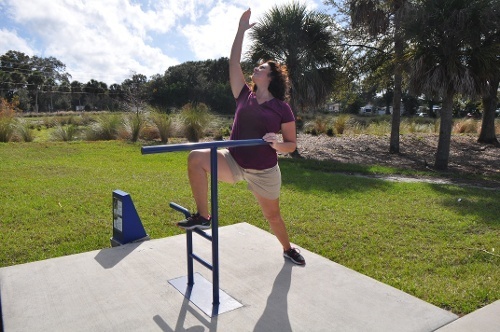Do you have movement literacy? You’re probably scratching your head wondering what movement literacy is. We understand reading literacy and even math literacy. In fact, our schools spend the majority of the day ensuring our children have the ability to develop both. But what’s movement literacy?
Movement Literacy: The progressive and systematic development of an individual’s functional abilities.
We all need to move, so it is essential to learn how our body is designed to move. We can be more efficient in our everyday activities as well as decrease the chance of having movement dysfunction (pain). Let’s explore movement literacy with a guide to common sense exercising and how you, by progressing purposefully through physical effort, can improve your movement vocabulary and set in place a plan that will move you toward movement literacy.
Movement Basics
One of the basics of movement literacy is that our body moves in three planes of motion. The three planes are:
- Sagittal (flexion and extension)
- Frontal (abduction and adduction)
- Transverse (rotation)
Though the vocabulary may be new, the idea is common sense when we observe body movement. Assess the majority of gym routines, and note that one plane of motion plays a very dominate role…sagittal.
Most people spend the majority of their time flexing with some extension. They occasionally throw in some abduction and adduction and for a small minority, the transverse plane makes an appearance. How does your routine stack up? Is it time to add some lateral movements and rotation? Check out a previous blog to learn more about why it’s so important to move in all of these six directions.

Physical Laws of Nature
Another principle of movement literacy is that we are subjected to the physical laws of nature: the law of gravity and ground force. Gravity will always be pressing down on us, just as the ground will always be pushing back on us as we move.
Because of these elements, “load and explode” is another important concept of movement literacy. We can explore the idea by examining a rubber band. If a rubber band is picked up and stretched back, we give the rubber band a “load” or potential energy. When we release the rubber band, it “explodes” and releases kinetic energy.
Our muscles work in much the same way; if we do not give them a “load” first, they will not perform to give us the proper “explode.” Apply this thinking in the pool using these 5 exercises for low back pain.
For example, with each step, the hamstrings must lengthen and then shorten to help propel the body forward. The sagittal plane, flexion/extension of the knees, hips and trunk are simple to see. Although the frontal and transverse plane motions are more difficult, a slow and exaggerated step helps make them easier to identify.
If the bones are moving in all three planes, then the muscles wrapped around them must be too. Therefore, to effectively prepare the body for walking, the hamstrings need a stretch-strength capacity in front-to-back, side-to-side, and turning motions.
Feel and Move Better
“That looks like dancing…” is a phrase I often hear from onlookers when I am training my clients. My answer is usually, “Yes it does – it also looks like football, golf, tennis, running after your kids (grandkids), gardening and a host of other activities you perform each day.” That is the way it should be. If you wanted to be the best (fill in your favorite sport or activity), would you practice and get better by spending the majority of the time on the ground, sitting or lying on your back?
For most activities, the answer would be NO! The majority of activities we perform, whether for sport or daily life, require us to be upright and moving multiple parts of our body in multiple directions at once. Now, I am not telling you to never perform an exercise sitting or lying down, but you must always consider how you need your body to move to be successful at a specific activity.
If an individual spends all day sitting at a desk, computer, or in a car, would it be wise to spend another hour at the gym sitting? The body thrives when it can move in fundamental movement patterns (walking, lunging, squatting, reaching, pulling, pushing, jumping and lifting). When we have freedom and fluidity of movement in all three planes of motion, we can excel at any skills or task we need to perform.
WECOACH Land Series
Improve your movement literacy in a gentle land exercise program created and delivered by Jeanmarie. The brilliant design of this program is that you’ll feel how movement on land doesn’t have to hurt! Jeanmarie teaches you how to move in a comfortable range and get better fitness results.
Each 10 minute program can be done on it’s own or together for a 30-minute workout.
- Reduce pain and stiffness using gentle hip movements and reaching combinations
- Improve lower body strength for stronger knees and hips
- Step and reach in 6 directions to improve core strength and balance
Develop your own movement literacy and join WECOACH Workouts today.
